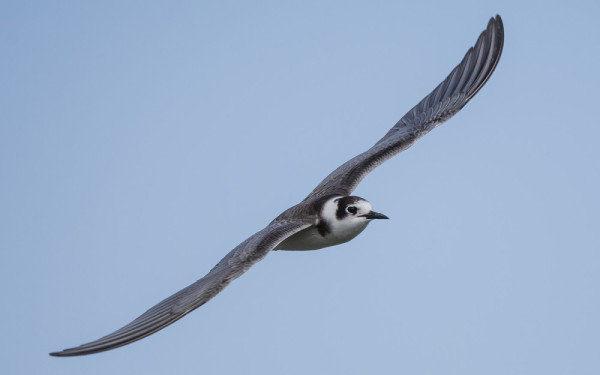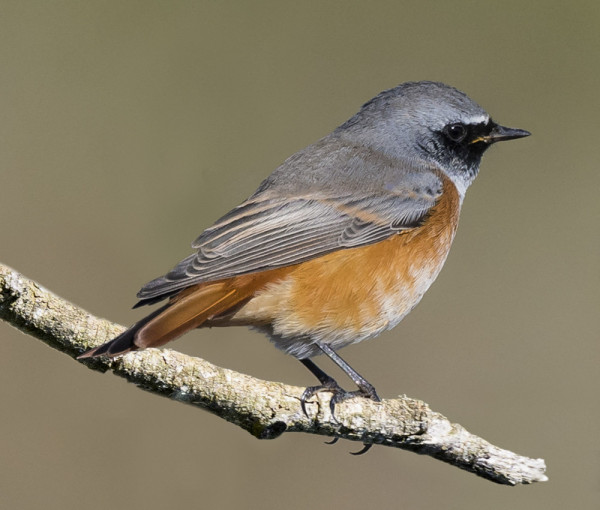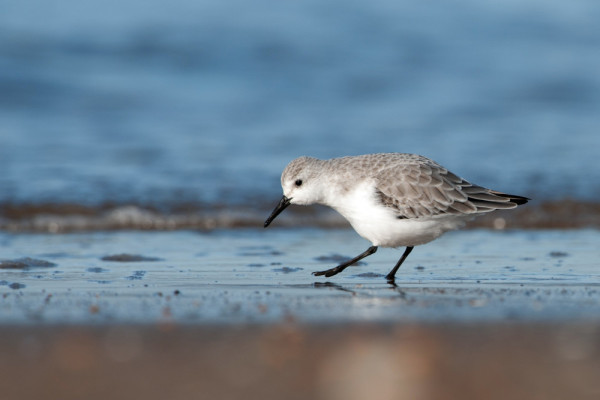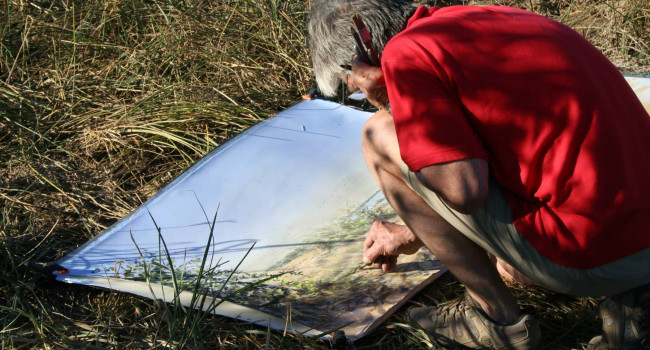
BirdTrack migration blog (2nd-8th September)
Scott’s role includes the day-to-day running of BirdTrack: updating the application, assisting county recorders by checking records and corresponding with observers.
Relates to projects
Migration in early autumn involves a wide variety of species. Common warblers are particularly noticeable as this year's young undertake their first migration. Chiffchaffs, Whitethroats, Lesser Whitethroats, Blackcaps, and Sedge Warblers were all well reported in the last week, but it will only be a fortnight or so before reports begin to tail off.
As with last week, for many observers, their focus was on the sea. However, reports were lower than the previous week with the BirdTrack reporting rates of both Manx and Cory’s Shearwater down, most likely due to less favourable winds for seawatching in the south-west. Some east coast locations did buck the trend, with a few well-watched individuals of both Great and Cory’s Shearwater seen heading past. Reports of Arctic Skua are increasing as we head towards their peak passage in mid-September; this is a species that can be found along both east and west-facing coasts and can even turn up inland if strong winds drive them ashore. The mid part of the week also saw a scattering of Long-tailed Skuas along the eastern coast from Aberdeenshire in the north to Kent in the south. In contrast, a flurry of Balearic Shearwater sightings was almost exclusively from locations in the southwest, hardly surprising given they breed around the Mediterranean.
Arctic breeding waders such as Golden and Grey Plover, Turnstone, and Knot have been arriving over the last few days, and mixed flocks were seen along estuaries up and down the country. Reports of Curlew Sandpiper remain low and could be a reflection of a poor breeding season - let us hope the next few days have them arriving en-masse.
The highlights in terms of rare species in the last week include an Eleonora’s Falcon in Norfolk, Greater Sandplover in Cleveland, Lesser Sandplover in Kent and a rather distant Roller in Lincolnshire.

Species focus - Black Tern
Late August/early September is a great time to catch up with Black Tern. It is an interesting species that passes through Britain in both the spring and autumn migration periods. During the spring it is more likely found on inland freshwater lakes and gravel pits as it makes its way to its breeding grounds in Eastern Europe and western Russia, but during the autumn it is largely seen from our coasts as it heads south on its long journey to sub-Saharan Africa.
We don't know where Black Terns that pass through Britain spend the winter months but it is likely to be along the coast of West Africa from Senegal south to Namibia. The number of Black Terns seen from British shores during the autumn migration is largely dependent on the weather: periods of easterly airflow during late August and early September, when Black Tern migration peaks, produce larger numbers than are seen during periods of westerly airflow.
In most autumns Black Terns can be seen making their way down our east coast and through the English Channel before heading into the Bay of Biscay and their onward journey that will take them south past Spain and Portugal.
Prior to the mid-1800s, Black Tern was a common breeding bird in southern and south-eastern England. Sadly we have lost this as a breeding species since that time due to extensive land drainage.

Looking ahead
With autumn migration being somewhat more protracted than spring migration, those species on the move at this time of year tend to hang around longer than they would during the spring - less of an urge to get back on breeding territory perhaps? As a result, the pace of migration is a little slower, with migrants often staying around for a few days, and the variety of species on the move at any one time can be more diverse.
With the winds forecast to be from an easterly direction as we approach the weekend, passerines will be the main focus: common warblers, swallows and martins, and chats will all be on the move. Redstart, Whinchat, Spotted Flycatcher, and Wheatear are all worth looking out for, and mixed in with these commoner species will be the inevitable scarcity such as Citrine Wagtail, Wryneck, Red-backed Shrike, or Barred, Greenish, or Arctic Warbler.

Wader passage will include a wide number of species including Knot, Dunlin, Little Stint, Sanderling, Ringed Plover, Curlew Sandpiper and Bar-tailed Godwit, all of which have their peak arrival at this time of year. Again look out for rarer species like Pectoral, Baird’s, and White-rumped Sandpiper amongst the flocks of commoner small waders.
As we head into next week the winds gather strength and scattered showers will cross the country. This could produce some good seawatching, especially in the southwest, where sightings of Sooty and Balearic Shearwaters are likely, and could also include the occasional Great and Cory’s Shearwater. Other seabirds on the move will include both Arctic and Long-tailed Skuas, Gannet, Fulmar and maybe the odd Sabines Gull or Leach's Petrel.
The prolonged south-easterlies hitting the Shetland Isles for much of the week can’t go unnoticed, and the expectation of something super rare will be in many a birders thoughts - but what will it be? Maybe a Ruppell’s Warbler, Caspian Plover or White-crowned Wheatear.
Launching the new BirdTrack App
A fresh look and new features - the new app is the perfect companion when out birdwatching and enables you to easily keep track of the birds you see.
Find out more








Share this page